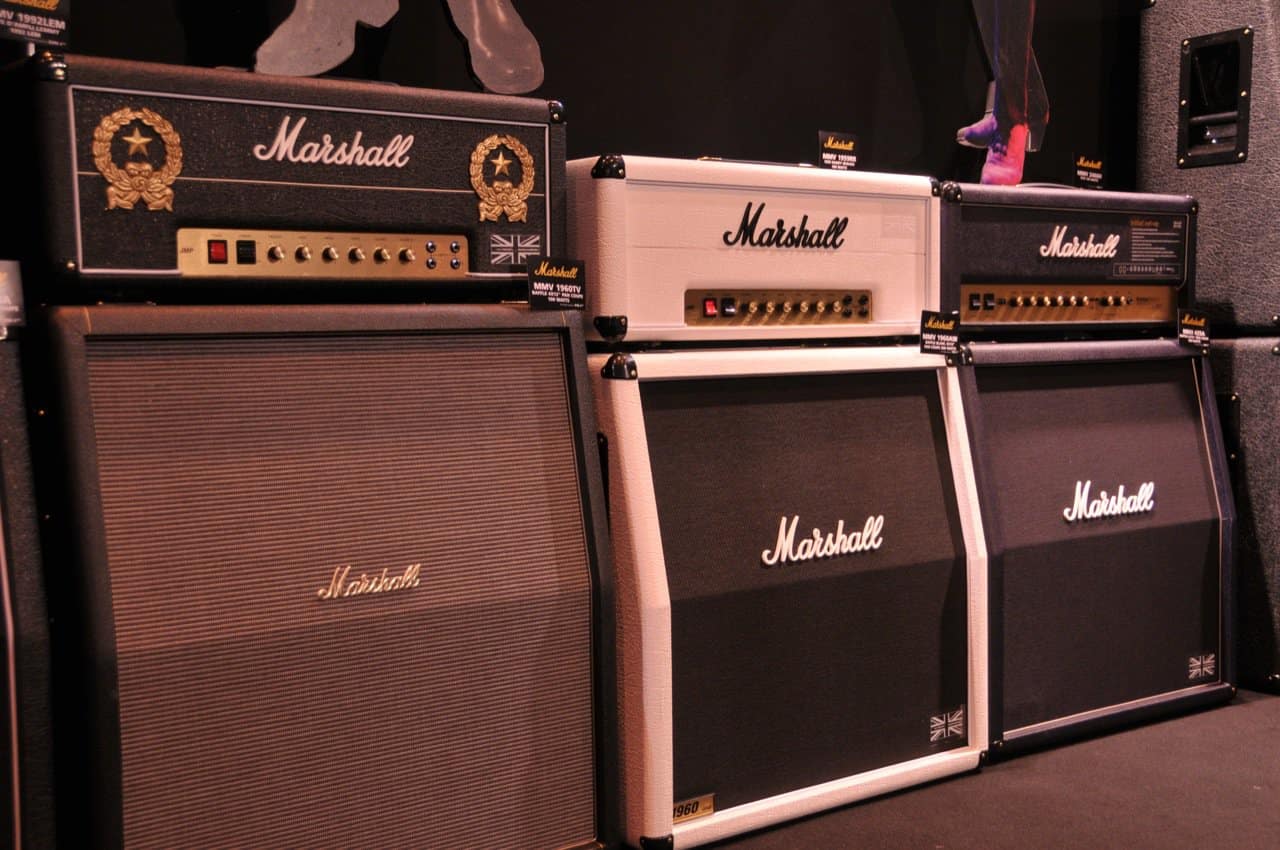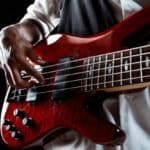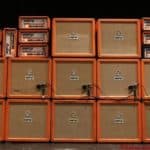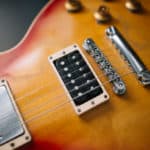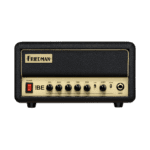The guitar is an amazing instrument that has always attracted people of different ages, no matter their backgrounds or lifestyle. As many people are interested in this topic, we should clear the best option for those who want to get started to play guitar.
Beginners usually tend to get starter equipment which is the cheapest and the one they can afford. And this is not necessarily a bad thing.
To each their own, and especially when venturing into a new hobby and you are not sure if you are going to enjoy it completely.
If you asked any experienced guitar player, probably the advice would be to not go for the cheapest options in the market but to opt for something of a higher quality.
Amps, in particular, are many times an afterthought, but I can assure you they would be a central part of your rig and, arguably, the most important.
So, do you need to buy an expensive amp if you are just starting out?
It depends on how serious you are about your guitar journey. If you plan on sticking with the instrument for a while, by all means, get the best amp you can afford. If you are not sure, go for something cheaper. Bear in mind that a good amp has more influence in making you sound better than a guitar.
One important issue to discuss is that cheap equipment has bad quality. What is more, as you progress with your learning, your taste will evolve and your taste will change.
However, first learners tend to give up easily, and this is a factor to bear in mind.
Having said that, I will try to help you to make the right choice.
Amps are not only about volume
As you may not know, amps are very important at defining the overall tone. Not everything is focused on how loud you are but on sound quality.
Volume, of course, is relevant but is not the only feature to have into account about amplifiers. What is more, other remarkable characteristics are voicing, and gain.
Although this might be confusing for most players, gain and volume are not the same and they work differently. To clarify this it is necessary to explain how guitar amps work.
A guitar amp runs a two-stages-procedure. The first level is the preamp stage, once there, the signal is processed and sent to the next level, which is the boosting stage.
At the second stage, the signal becomes stronger and the amp produces the sound that comes out of the speakers.
At the preamp stage, you can control the strength of the signal and that is what we call gain. But not only this: The preamp itself is configured in a particular way, giving the amp its own voice (or voicing).
This stage is also responsible for fine-tuning the raw sound with EQ filters, just as you would do with any hi-fi audio device.
The adjustments we can do at this point are more related to the tone than the volume and also determine the amount of distortion and the color of your sound.
On the flip side, we have the second stage where the volume relies. Whereas the voicing has more to do with tonal characteristics, the volume is the power of the sound.
As it is in charge of the energy, it provides the toughness of the overall sound.
Expensive guitar vs expensive amp
An expensive guitar would be wonderful to play, you will feel more comfortable playing a Fender than a second-hand cheap guitar. Needless to say, the sound will improve and you will notice the difference.
This is because a high-end guitar has better components than a cheap one and that is shown in the sound.
Nevertheless, your expensive guitar will sound better but it will not be amazing. Although it is a high-quality instrument, it needs equipment that suits its requirements.
What I mean to say is that a better amp will be needed if you want to enhance your guitar’s attributes. Otherwise, you will be wasting your instrument’s potential.
As we have explained previously when we talked about expensive guitars, an expensive amp will give you a higher quality in terms of sound and tone.
But the important fact about high-end amplifiers is that they will make your crappy guitar sound amazing.
To be extra clear, it’s the common consensus that a cheap guitar will sound professional through a great amp, while an expensive guitar will sound like trash when plugged into a cheap amp.
And I’m not talking of amp models in particular or the top of the food chain brands. Any tube amp will let you achieve a more vibrant warmer tone than an entry-level amp.
How much should you spend on a good amp as a beginner?
We already know the basics so now the hard part has come, how much money should I invest in a good amp being a starter?
Well, there are different choices, and I mentioned tube amps earlier. The sad truth is that they are expensive, fragile, and a bit complex for a complete beginner.
As you are starting out, a solid-state amp will do the job.
Moreover, they are more affordable, and some of them have a pretty good sound.
How to tell a solid-state amp from a tube amp? Well, probably if you can afford it without thinking about it twice, it’s a solid-state amp.
The differences between these different kinds of amps are beyond the scope of this article, but just know that tube amps to most players sound better, and are more expensive. However, solid-state amps are a great entry-level to midrange option.
What is also important is to think about what you are looking for. Are going to play in a band? Or do you just want to practice at home?
Well, if your goal is to form a band and play on stage, you will need volume. The problem with this is that beginner amps lack the capacity of producing high volume.
To solve this problem, the best you can do is invest in a more powerful amp instead of cheap ones, which usually have a lower output. 50 to 100 watts will do the job. A good amp will give you a high-quality sound at high volumes without losing clarity.
Take into consideration that if you usually play clean tones, it would be better to stick to 100-watt amps, since they are less likely to distort when cranked. The opposite is true for those who prefer saturated tones.
If you will be only practicing, you just need equipment that sounds good at lower volume levels (excellent to play in your own bedroom). You will just require an amplifier from 0.5 to 30 watts which are basically practicing amps.
In conclusion, think about your expectations and remember, the more wattage the amp has, the higher the price at a comparable quality level.
Best kind of amp to get as a beginner
As you may notice, amps are compounded by two main components, the amplifier, and the speaker.
And, although there are different kinds of amps, for a beginner the best option would be a combo amp.
This type of gear is made of an amplifier and a speaker but everything is put together in just one piece. So, moving your equipment from one place to another will be simpler.
In addition, they are quite affordable in comparison with their counterpart, head plus cabinet.
Amp head and cabinet setup are two separate pieces of gear, the head works as an amplifier while the cabinet takes the place of the speaker.
The interesting aspect of this equipment is that you can customize it or even mix it between different heads and cabinets.
However, its value is higher than a combo amp and they are more complex.
My recommendation for starters is to keep it simple, look for a nice combo amp that suits your power requirements and the kind of sound you want to achieve.
And if you don’t have that last thing defined yet, don’t overstress. It’s an amp, not a child. You can trade it for a more suitable one down the line.
What if you don’t get an amp at all?
Don’t worry if you can’t get an amp, there exists a technology that could help you.
Obviously, we are talking about amp modelers.
This is a simulator that emulates the functions of a regular amp. They come in pedal form or even as computer software.
You can use them with headphones and you can explore new sounds through the effects this device provides, achieving pretty good tones.
Beginner amp vs amp modelers or software
To conclude I would like to mention some differences between beginner amps and amp modelers or software.
Although they could not be the best option, an amp is a more immediate solution. You plug your instrument in and you start playing, you only need your guitar and a cable to make things work.
We also have amp modelers, discussed before, which are useful too but might require some extra tweaking and, although they sound great, it could be a waste of time for a beginner that should be focusing on learning how to play the instrument and not on how to tinker with amp models and cab simulations.
Another very similar alternative to play could be software-based amp modelers, but in this case, you will need to take a laptop, tablet, or phone anywhere you want to play or practice.
These last ones are, in most cases, just the same as their hardware counterparts, but made for your computer. Think of the Line 6 Helix pedalboard and the Helix Native plugin for PC.
What is more, some amp modelers come with effects that are great for experimenting and taking your first steps but make them more difficult to understand, and just get to playing.
The thing with this equipment is that they require a PA system (a professional sound system with speakers), or headphones, or some other mean for plugging it and getting some sound, while a combo amp has its own speakers on the inside.

Hello there, my name is Ramiro and I’ve been playing guitar for almost 20 years. I’m obsessed with everything gear-related and I thought it might be worth sharing it. From guitars, pedals, amps, and synths to studio gear and production tips, I hope you find what I post here useful, and I’ll try my best to keep it entertaining also.

